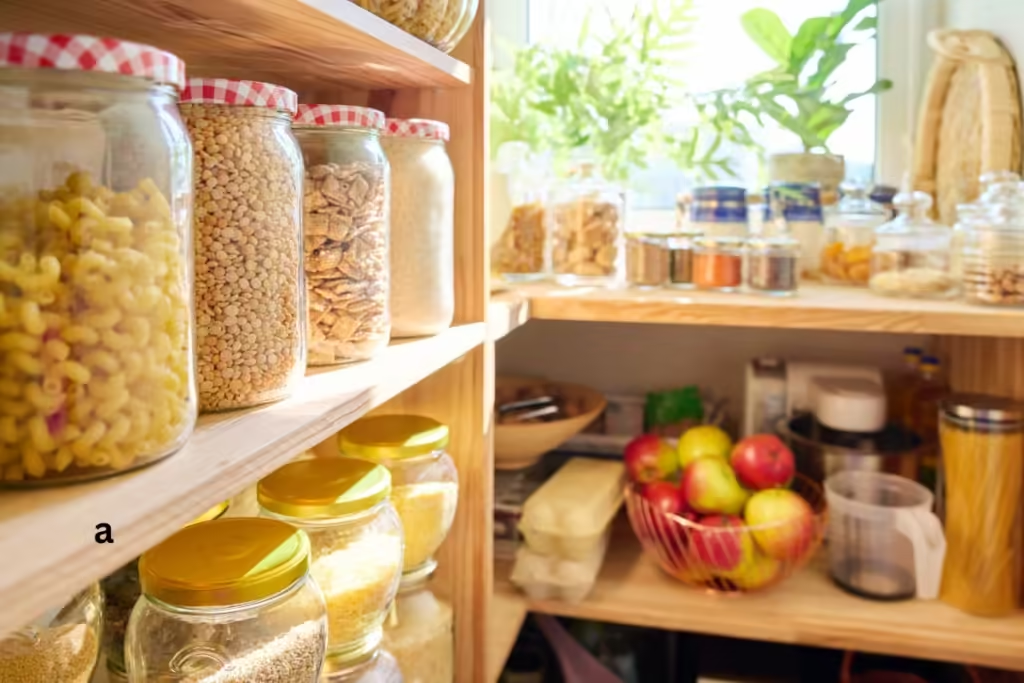
September flower planting: 7 Best Flowers to Plant in September for a Stunning Fall Garden
Introduction
September flower planting is the perfect way to transition your garden from summer’s vibrant blooms to the rich, warm hues of autumn. As the days grow shorter and temperatures begin to cool, September flower planting becomes an ideal gardening activity for both seasoned experts and enthusiastic beginners. Whether you want to fill your garden with bursts of color or lay the groundwork for a stunning spring display, September flower planting offers a unique opportunity to refresh your outdoor space.

Why choose September flower planting? The cooler weather reduces stress on your new plants, while the still-warm soil encourages strong root growth—key factors in ensuring your garden thrives through the fall and beyond. With the right choices, your September flower planting efforts can result in a garden that not only stands out now but also blossoms beautifully in the coming seasons.
From pansies to snapdragons, and even ornamental kale, the possibilities for September flower planting are endless. Imagine your garden filled with vibrant chrysanthemums or the sweet scent of alyssum filling the air. By focusing on September flower planting, you’re not just planting flowers—you’re creating an oasis of color and life that will endure through the changing seasons.
So, if you’re ready to transform your garden, there’s no better time than now. Dive into September flower planting and discover how this simple act can lead to a garden that remains lush, colorful, and full of life, even as the weather cools down.
Why Plant Flowers in September?

As the days grow shorter and the temperatures begin to drop, you might think it’s time to wind down your gardening efforts. However, September flower planting is actually an ideal time to introduce certain flowers to your garden. These hardy plants not only thrive in cooler weather but also lay the groundwork for a stunning spring display. By focusing on September flower planting, you’re giving your garden a head start for the next growing season, ensuring that your flowers will bloom beautifully when spring arrives.
Moreover, the cooler September weather reduces the stress on newly planted flowers, allowing them to establish strong roots without the harsh summer heat. This makes September flower planting an excellent choice for gardeners who want to maintain a vibrant and colorful garden through the fall and into the early winter.
Benefits of September Planting

Engaging in September flower planting offers a multitude of advantages that can enhance the beauty and resilience of your garden. First and foremost, planting flowers in September gives them a significant head start before the colder months set in. The cooler temperatures during this time help reduce stress on newly planted flowers, allowing them to establish themselves more effectively.
Additionally, the soil remains warm from the summer heat, which is perfect for strong root development. This means that your flowers will be better equipped to survive the winter and thrive in the spring. By focusing on September flower planting, you’re setting the stage for a garden that stands out not only in the fall but also in the months to come.
Moreover, fall-blooming flowers bring a burst of color when many other plants are starting to fade. This ensures that your garden remains vibrant and eye-catching, even as the days grow shorter. September flower planting allows you to maintain a lively and colorful garden, making it a true standout in your neighborhood.
Preparing Your Garden for Fall Blooms

Before diving into September flower planting, it’s essential to prepare your garden to support new growth and ensure your fall blooms thrive. Start by clearing out any summer annuals that have finished their season or are past their prime. Removing these plants will free up space and reduce competition for nutrients, giving your new flowers the best chance to flourish.
Next, focus on enriching the soil. Adding compost or organic matter will replenish the nutrients that your plants need to establish strong roots and grow vigorously. Well-nourished soil is a key factor in successful September flower planting, as it provides a solid foundation for your fall blooms.
Finally, consider applying a layer of mulch around your new plants. Mulching helps retain moisture in the soil, which is especially important as temperatures begin to drop. It also acts as an insulating layer, protecting the roots from colder weather. By taking these steps, you’ll ensure that your garden is well-prepared to support a vibrant and colorful display through the fall season and beyond.
Flower #1: Pansies

Pansies are a beloved choice for September flower planting, offering cheerful and vibrant blooms that can easily withstand light frost. These hardy flowers bring a burst of color to your garden just as summer begins to fade, making them a perfect addition to your fall landscape.
Ideal Planting Conditions
Pansies thrive in full to partial sunlight and prefer well-drained soil. Their resilience in cooler weather makes them an ideal candidate for September flower planting. To get the best results, choose a spot in your garden that receives morning sun and afternoon shade, helping the flowers stay vibrant throughout the season.
Tips for Successful Sowing
For a flourishing display of pansies, start by spacing the plants about 6 to 8 inches apart. This allows enough room for the plants to grow and spread without overcrowding. After planting, give them a good watering to help them settle in, and consider using a balanced fertilizer to encourage continuous blooming throughout the fall. With the right care, your pansies will reward you with a colorful and long-lasting display, brightening up your garden well into the cooler months.
Flower #2: Chrysanthemums

Chrysanthemums, often simply called mums, are synonymous with fall. Their vibrant colors, ranging from deep reds to bright yellows, add a festive and lively touch to any garden. Perfect for September flower planting, mums can transform your outdoor space into an autumnal showcase.
Best Locations for Planting
Mums thrive in sunny spots with well-drained soil. To achieve optimal growth and vibrant blooms, plant them in areas that receive at least 6 hours of sunlight daily. This ensures that your chrysanthemums will produce their best colors and maintain their health throughout the fall season.
Maintaining Chrysanthemums through Fall
To keep your chrysanthemums blooming beautifully throughout the fall, consistent care is key. Water them regularly, ensuring the soil stays moist but not waterlogged. Removing faded blooms, a process known as deadheading, encourages more flowers to grow and keeps the plant looking fresh. Additionally, apply a layer of mulch around the base of the plants to protect the roots as the weather cools. With these simple maintenance steps, your chrysanthemums will continue to add vibrant color to your garden well into the fall.
Flower #3: Marigolds

Marigolds are a fantastic choice for fall gardens, known for their vibrant orange and yellow flowers that bring warmth and cheer to your garden. Their resilience and bright colors make them a popular option for September flower planting, ensuring a lively display as other plants begin to fade.
Soil Preparation Tips
Marigolds thrive in moderately fertile, well-drained soil. To give your marigolds the best start, it’s essential to prepare the soil properly. Begin by working in some compost to enrich the soil, enhancing its fertility and drainage capabilities. This will provide your marigolds with the nutrients they need for strong growth and abundant blooms throughout the fall.
Sowing Techniques for Marigolds
For successful marigold planting, direct sow the seeds in September. This timing allows for quick germination, taking advantage of the lingering warmth of early fall. Space the seeds about 10-12 inches apart to give each plant enough room to grow. Cover the seeds lightly with soil, just enough to protect them without burying them too deeply. After sowing, water gently to avoid washing away the seeds, ensuring they remain in place to sprout and thrive. With these techniques, your marigolds will quickly establish themselves, adding a bright and festive touch to your fall garden.
Flower #4: Snapdragons

Snapdragons are a fantastic choice for adding unique, colorful blooms to your fall garden. Their distinctive flowers not only provide height but also add interest and texture to your garden beds. Perfect for September flower planting, snapdragons can enhance the beauty of your garden even as temperatures begin to cool.
Choosing the Right Varieties
When selecting snapdragons for September flower planting, opt for varieties that are suited for fall. These varieties are typically more frost-tolerant and capable of withstanding the cooler temperatures of autumn. Look for snapdragons labeled as “winter hardy” or “fall-blooming” to ensure they thrive through the season.
Watering and Care Tips
Snapdragons thrive in moist, well-drained soil. Regular watering is crucial, especially during dry spells, to keep the soil consistently moist without becoming waterlogged. To maintain a continuous display of blooms, practice deadheading by removing spent flowers. This encourages the plant to produce new blooms and keeps your garden looking vibrant throughout the fall season. With proper care, your snapdragons will remain a standout feature in your garden, adding color and charm even as the weather cools.
Flower #5: Violas

Violas are closely related to pansies and bring a delicate, charming presence to any garden. Their subtle beauty and vibrant colors make them an excellent choice for September flower planting, adding a touch of elegance and color to your fall landscape.
Sunlight and Temperature Requirements
Violas thrive in full sun to partial shade and prefer cooler temperatures, which makes them ideal for September flower planting. Their adaptability to varying light conditions and their preference for cooler weather ensure that they will flourish throughout the fall, providing a charming display in your garden.
Managing Growth and Blooms
To keep your violas blooming consistently, it’s important to manage their growth properly. After the initial flush of flowers, pinch back the plants to encourage fuller growth and additional blooms. This simple maintenance technique helps promote a denser, more vibrant display and ensures that your violas continue to add beauty to your garden throughout the fall season. With these care tips, your violas will remain a lovely and enduring feature of your autumn garden.
Related:
Living Plant Wall: 10 Amazing Benefits to Elevate Your Space
Flower #6: Ornamental Kale

Ornamental kale adds a unique touch to your garden with its ruffled leaves in shades of purple, pink, and white. This plant provides not only a burst of color but also a distinctive texture, making it a standout choice for September flower planting and enhancing your fall garden’s visual appeal.
Complementary Fall Plantings
Ornamental kale pairs beautifully with other fall favorites like mums, pansies, and violas. The contrast between the kale’s bold, ruffled leaves and the vibrant blooms of these flowers creates a visually appealing mix of color and texture. Combining ornamental kale with these plants can elevate the overall look of your garden, providing a rich, autumnal display.
Long-lasting Maintenance Strategies
One of the advantages of ornamental kale is its low-maintenance nature. It thrives with regular watering and can withstand cooler temperatures, often lasting well into the winter. To ensure your ornamental kale continues to look its best, simply keep the soil consistently moist and enjoy its striking foliage throughout the fall and beyond. With minimal care, ornamental kale will remain a colorful and enduring feature of your garden.
Flower #7: Sweet Alyssum

Sweet Alyssum is celebrated for its fragrant, honey-scented flowers that bloom in delicate clusters, adding both beauty and aroma to your garden. Ideal for September flower planting, Sweet Alyssum enhances your fall garden with its charming blooms and delightful scent.
Maximizing Growth in Cooler Weather
Sweet Alyssum thrives in cooler temperatures, making it an excellent choice for September flower planting. It performs best in well-drained soil and can be planted in areas with full sun or partial shade. By choosing the right location and soil conditions, you’ll ensure robust growth and a steady display of its lovely, fragrant flowers throughout the fall.
Pest Management and Troubleshooting
While Sweet Alyssum is relatively pest-resistant, it’s important to keep an eye out for aphids, which can sometimes be a problem. To manage these pests, a strong spray of water can help dislodge them from the plant. Alternatively, use an organic insecticide to keep them at bay. With these simple pest management strategies, your Sweet Alyssum will continue to thrive and add its sweet fragrance to your garden.
Conclusion
Planting flowers in September is a rewarding way to extend the beauty of your garden into the cooler months. By incorporating a variety of fall-blooming flowers—from the vibrant hues of chrysanthemums to the delicate charm of violas—you’ll ensure that your garden remains a colorful and inviting retreat even as the temperatures drop.
With proper care and preparation, these September flower planting choices will not only brighten your autumn landscape but also lay the groundwork for a stunning spring display. Whether it’s the cheerful blooms of pansies or the unique texture of ornamental kale, these plants provide a dynamic and lasting beauty that will enhance your garden throughout the fall and into the new year. Embrace the season with thoughtful planting and enjoy the vibrant, enduring charm of your fall garden.
FAQs
1. Can I plant flowers in September if I live in a warmer climate?
Yes, even if you live in a warmer climate, you can plant certain flowers in September. Look for varieties that are suited to your local climate and can tolerate mild temperatures. Flowers like marigolds and sweet alyssum are often adaptable and can thrive in a range of conditions.
2. How often should I water flowers planted in September?
Watering frequency depends on the specific needs of the plants and weather conditions. Generally, flowers planted in September should be watered regularly to keep the soil consistently moist, but not waterlogged. Snapdragons and pansies may require more frequent watering during dry spells to ensure healthy growth.
3. What should I do if my fall-blooming flowers are not blooming as expected?
If your flowers are not blooming as expected, check for common issues such as inadequate sunlight, poor soil conditions, or pest problems. Ensure that your flowers receive the appropriate amount of light and that the soil is well-drained and rich in nutrients. For chrysanthemums and violas, removing spent blooms (deadheading) can also encourage more flowering.
4. How can I protect my fall-blooming flowers from frost?
To protect your flowers from frost, consider using mulch around the base of the plants to insulate the soil and roots. You can also cover plants with frost cloths or burlap on particularly cold nights. For hardy varieties like ornamental kale, a light frost may not be a problem, but additional protection can help extend their blooming period.
5. Are there any specific pests I should watch out for in fall gardens?
Yes, common pests to watch out for in fall gardens include aphids, slugs, and snails. Regularly inspect your plants for signs of pest activity and take appropriate measures to manage them. For sweet alyssum, a strong spray of water or an organic insecticide can help keep aphids at bay.
6. When should I start preparing my garden for September planting?
It’s best to start preparing your garden a few weeks before September. Clear out any summer annuals, enrich the soil with compost or organic matter, and ensure that your garden beds are ready for new plantings. This preparation will give your fall-blooming flowers the best chance to establish and thrive.
Feel free to reach out with any more questions about September flower planting or general gardening tips!
References
- The Old Farmer’s Almanac – Provides seasonal gardening tips and information on planting schedules.
The Old Farmer’s Almanac - American Horticultural Society – Offers resources on various plants, including their care and planting requirements.
American Horticultural Society - National Gardening Association – A valuable resource for gardening tips, plant care, and seasonal advice.
National Gardening Association - Gardenista – Features garden design ideas and plant care tips, including fall gardening suggestions.
Gardenista - Better Homes & Gardens – Provides detailed information on gardening, including plant care and seasonal planting guides.
Better Homes & Gardens - Burpee – Offers a wide range of information on garden plants, including planting guides and care instructions.
Burpee
These resources will help you get the most out of your September flower planting and provide additional insights into maintaining a vibrant and healthy garden.




